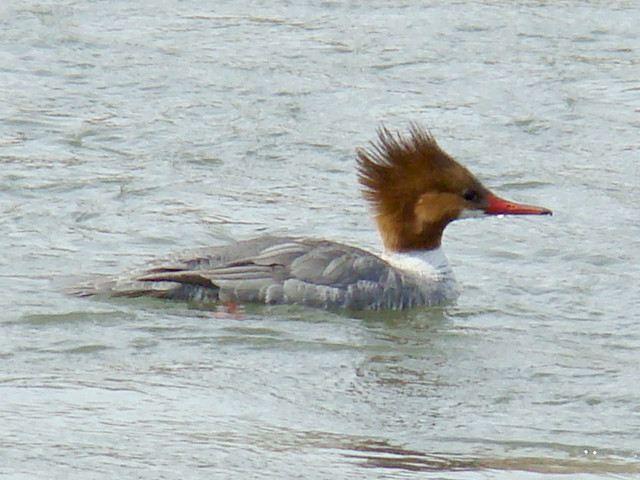Ever since last October, when my niece painted our president’s head onto a pumpkin, I’ve been ruminating on posting this. But I have some misgivings that kept me delaying it. So, let me get them out first. Please, don’t think any less of the beautiful mergansers after you finish reading it.
My niece’s choice of subject for her art reminded me of a photo I saw in the newspaper more than a year ago (before my home delivery turned into digital subscription). It showed Mr. Trump’s hair rather long, reaching down until its tips rested on his suit jacket’s collar. I was surprised by this “untidiness” which few businessmen or politicians would sport in the US. At the same time, his hair in profile evoked a sense of familiarity in me, but with what? I couldn’t pinpoint the source of déjà vu immediately.
After flipping the newspaper page back again, and giving the photo several more stares, it dawned on me: Merganser!
(Source)

(Source)

A quick search on the internet made me realize I am far from the only person who finds images of animals and objects comparable to his hair. The fascination with our president’s hair style has motivated many speculations on how and why he combs his hair the merganser’s way. The recent tell-it-all book Fire and Fury by Michael Wolff naturally can't avoid devoting a paragraph to hair fashion.
However, my favorite pictorial parody is from The Economist.
Finally, I thank my artistic niece for inspiration. And I trust her professional judgment: “They (referring to mergansers) are a lot cuter than Trump.”
My niece’s choice of subject for her art reminded me of a photo I saw in the newspaper more than a year ago (before my home delivery turned into digital subscription). It showed Mr. Trump’s hair rather long, reaching down until its tips rested on his suit jacket’s collar. I was surprised by this “untidiness” which few businessmen or politicians would sport in the US. At the same time, his hair in profile evoked a sense of familiarity in me, but with what? I couldn’t pinpoint the source of déjà vu immediately.
After flipping the newspaper page back again, and giving the photo several more stares, it dawned on me: Merganser!
(Source)

(Source)

A quick search on the internet made me realize I am far from the only person who finds images of animals and objects comparable to his hair. The fascination with our president’s hair style has motivated many speculations on how and why he combs his hair the merganser’s way. The recent tell-it-all book Fire and Fury by Michael Wolff naturally can't avoid devoting a paragraph to hair fashion.
However, my favorite pictorial parody is from The Economist.
Finally, I thank my artistic niece for inspiration. And I trust her professional judgment: “They (referring to mergansers) are a lot cuter than Trump.”


Comments
Post a Comment